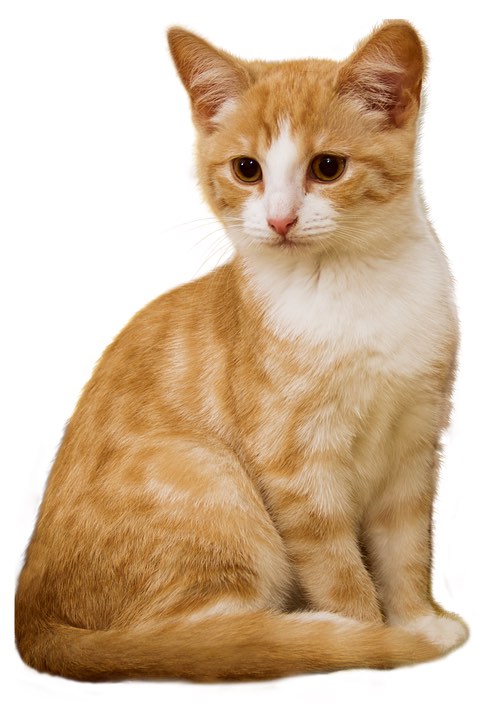This is a Gravity Cluster Image example using the TensorFlow ResNet (Deep Residual Network) server helm chart (2.0.13) that serves a machine learning (ML) model. The default model is for image classification. The model is pulled from a public URL specified in the values.yml and can be configured to other models. See the TensorFlow website for more information on using ResNet models.
The TensorFlow ResNet model has 1000 classifications for living creatures and objects. Here is an example Ostrich graphic image the model will process and provide a tensor classification for.
Welcome to the Bitnami tensorflow-resnet container
Subscribe to project updates by watching https://github.com/bitnami/bitnami-docker-tensorflow-resnet
Submit issues and feature requests at https://github.com/bitnami/bitnami-docker-tensorflow-resnet/issues
calling predict using file: /sampleImages/ostrich.jpg ...
call predict ok
outputs size is 2
the result tensor[0] is:
10
the result tensor[1] is:
[4.90122887e-10 1.7140348e-09 7.5265244e-10 9.62422142e-10 7.78775e-10 8.07670708e-10 1.95118852e-10 6.64805322e-10 1.48357947e-06 6.94784558e-06...]...
Done.
# Tensor classification retrieval example
Tensor result id retrieve: 10
Classification name: ostrich
To construct the Tensorflow-ResNet Cluster Image with a dependency-free .tar file use this command. You can then deploy the Tensorflow-ResNet as a self-contained, truly portable application for your preferred infrastructure.
tele build -o tensorflowresnet.tar tensorflow-resnet/resources/app.yamlFurther details on installing Gravity Cluster Images is available here.
In addition to Cluster Images, Gravity supports packaging application helm charts as self-contained application images. The application is then deployable in the same manner as helm charts to Gravity clusters. Further information on application packaging deployment is available here.
tele build -o tensorflowresnet.tar tensorflow-resnet/resources/charts/tensorflow-resnetThe TensorFlow-ResNet application uses the container port 8500 which is available as NodePort of 30090 by default. The port is used for client image classification requests. After deploying you will see the following Pod status of initializing while the model is loaded.
$ kubectl get po
NAME READY STATUS RESTARTS AGE
tensorflow-resnet-bf8f6f5b6-22pgd 0/1 PodInitializing 0 7s
tensorflow-resnet-bf8f6f5b6-59fq8 0/1 PodInitializing 0 7s
tensorflow-resnet-bf8f6f5b6-qbd6v 0/1 PodInitializing 0 7s Once the model is loaded these pods are available to serve image classifications.
kubectl get po
NAME READY STATUS RESTARTS AGE
tensorflow-resnet-bf8f6f5b6-22pgd 1/1 Running 0 37s
tensorflow-resnet-bf8f6f5b6-59fq8 1/1 Running 0 37s
tensorflow-resnet-bf8f6f5b6-qbd6v 1/1 Running 0 37s$ kubectl get deployments
NAME READY UP-TO-DATE AVAILABLE AGE
tensorflow-resnet 3/3 3 3 10mImage classification requests should be done on a machine with Docker installed. Take note of one of the server's available IPs and confirm the available NodePort. By default it should be 30090. After invoking you will receive a result tensor.
The ./tensorClientResources/class.json has an array with the names of the results. Note that the classification in the JSON file is one number less then the result. For example if you gave an image of a hammerhead shark you would
receive the number 5 tensor result which is number 4 below.
{
"4": [
"n01494475",
"hammerhead"
],
"5": [
"n01496331",
"electric_ray"
]
}A convenience script is provided to map the classification number to an English description See the example below.
Two example invocations are shown here. First invoking a local image with a volume mount and the second is with an image from a public URL.
Example local image client invocation on myserver1 with nodeport 30090. Substitute myserver1 with the address or hostname of your server.
$ docker run -v $(pwd)/sampleImages/:/sampleImages/ --rm -it bitnami/tensorflow-resnet bash -c "resnet_client_cc --server_port=myserver1:30090 --image_file=/sampleImages/ostrich.jpg"
Unable to find image 'bitnami/tensorflow-resnet:latest' locally
latest: Pulling from bitnami/tensorflow-resnet
20b41457e783: Pull complete
c97fbd806ec8: Pull complete
431a77662433: Pull complete
cfd760178616: Pull complete
bd8462ed5e56: Pull complete
fd328fc82771: Pull complete
2ad6364db09a: Pull complete
2d8d2584069b: Pull complete
481c10440f8a: Pull complete
c759cb1595ec: Pull complete
Digest: sha256:05183e5446b778503a6151c570a66dafa9fe7ad905aee0f4b0a9c8c9a5519515
Status: Downloaded newer image for bitnami/tensorflow-resnet:latest
Welcome to the Bitnami tensorflow-resnet container
Subscribe to project updates by watching https://github.com/bitnami/bitnami-docker-tensorflow-resnet
Submit issues and feature requests at https://github.com/bitnami/bitnami-docker-tensorflow-resnet/issues
calling predict using file: /sampleImages/ostrich.jpg ...
call predict ok
outputs size is 2
the result tensor[0] is:
10
the result tensor[1] is:
[4.90122887e-10 1.7140348e-09 7.5265244e-10 9.62422142e-10 7.78775e-10 8.07670708e-10 1.95118852e-10 6.64805322e-10 1.48357947e-06 6.94784558e-06...]...
Done.Getting the Image Classification Name
$ cd tensorClientResources/
$ ./getimageclassification.sh 10
Tensor result id retrieve: 10
Classification name: ostrichInvoking a public URL on myserver1 with nodeport 30090. Substitute myserver1 in the --server-port argument with the IP or reachable hostname.
$ docker run --rm -it bitnami/tensorflow-resnet bash -c "curl -Lo /tmp/cat.jpg https://tensorflow.org/images/blogs/serving/cat.jpg && resnet_client_cc --server_port=myserver1:30090 --image_file=/tmp/cat.jpg"
Welcome to the Bitnami tensorflow-resnet container
Subscribe to project updates by watching https://github.com/bitnami/bitnami-docker-tensorflow-resnet
Submit issues and feature requests at https://github.com/bitnami/bitnami-docker-tensorflow-resnet/issues
% Total % Received % Xferd Average Speed Time Time Time Current
Dload Upload Total Spent Left Speed
100 252 100 252 0 0 6000 0 --:--:-- --:--:-- --:--:-- 6000
100 63753 100 63753 0 0 263k 0 --:--:-- --:--:-- --:--:-- 404k
calling predict using file: /tmp/cat.jpg ...
call predict ok
outputs size is 2
the result tensor[0] is:
[2.41628277e-06 1.90121978e-06 2.72477064e-05 4.42638907e-07 8.98362202e-07 6.84421821e-06 1.66555365e-05 3.42984436e-06 5.25692076e-06 2.66781899e-05...]...
the result tensor[1] is:
286
Done.
# get the image classification name
Tensor result id retrieve: 286
Classification name: Egyptian_cat
